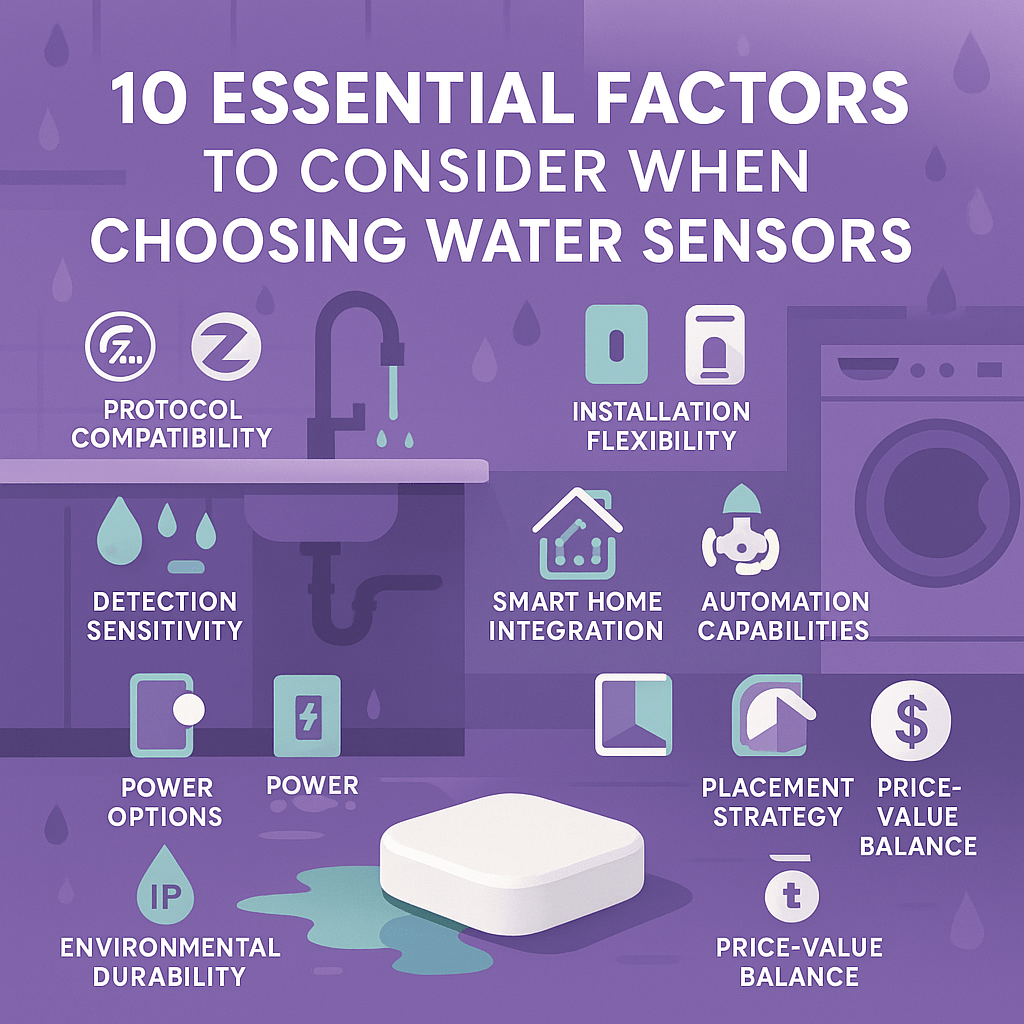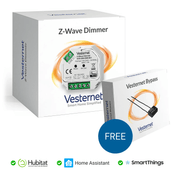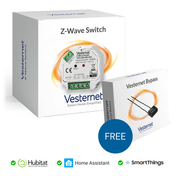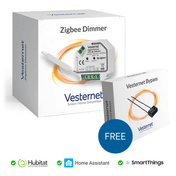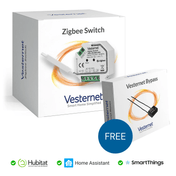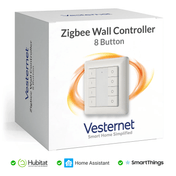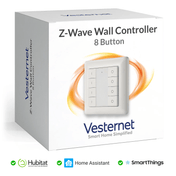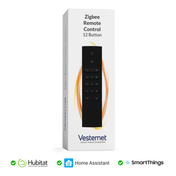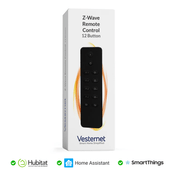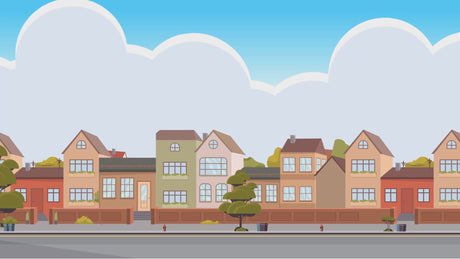Water damage is one of the most costly and devastating problems homeowners face, with the average insurance claim exceeding £3,000. Whether it's a burst pipe, a leaking washing machine, or a faulty water heater, water damage can strike without warning and cause extensive damage to your property and belongings. This is where smart water sensors become invaluable – they act as your home's early warning system, detecting leaks and floods before they become major disasters.
Smart water sensors have revolutionized home protection by providing real-time monitoring and instant alerts when water is detected where it shouldn't be. These compact devices can be placed throughout your home in leak-prone areas, sending immediate notifications to your smartphone and triggering automated responses to minimize damage. But with numerous options available, choosing the right water sensor for your specific needs requires careful consideration of several key factors.
In this comprehensive guide, we'll explore the 10 essential factors you need to consider when selecting water sensors for your smart home. From protocol compatibility and detection sensitivity to battery life and environmental durability, understanding these factors will help you make an informed decision that provides reliable protection for your home.
1. Protocol Compatibility and Smart Home Integration
The foundation of any effective smart water sensor system is seamless integration with your existing smart home setup. The two primary protocols dominating the market are Z-Wave and Zigbee, each offering distinct advantages for different scenarios.
Z-Wave sensors excel in reliability and range, with Z-Wave Plus technology providing enhanced performance and longer battery life. Z-Wave operates on a dedicated frequency (868.42MHz in Europe), reducing interference from other wireless devices. The protocol's mesh networking capabilities ensure robust communication throughout your home, with each powered device acting as a signal repeater.
Zigbee sensors offer excellent compatibility with popular smart home platforms like SmartThings, Hubitat, and Home Assistant. Zigbee 3.0 provides improved interoperability and security, making it an excellent choice for diverse smart home ecosystems. The protocol's low power consumption extends battery life while maintaining reliable communication.
When selecting water sensors, ensure they're compatible with your existing hub or controller. Some sensors work exclusively with specific ecosystems (like Aqara sensors requiring an Aqara Hub), while others offer broader compatibility across multiple platforms. Consider your long-term smart home strategy and choose sensors that will integrate seamlessly with your planned expansions.
2. Detection Sensitivity and Accuracy
The effectiveness of a water sensor largely depends on its ability to detect water quickly and accurately. Detection sensitivity varies significantly between models, with some sensors capable of detecting water levels as low as 0.5mm, while others require more substantial water presence.
Probe-based detection offers the highest sensitivity, with sensors like the Aqara Water Leak Sensor T1 detecting water at just 0.5mm depth. These sensors use conductive probes that complete a circuit when water bridges the gap between them, providing immediate detection of even minor leaks.
Contact-based sensors require direct contact with water but offer reliable detection for most household scenarios. These sensors are ideal for placement under appliances, near water heaters, and in basements where water accumulation is more likely.
Multi-point detection capabilities allow some sensors to monitor multiple locations using external probes or wired connections. Professional-grade sensors like the Nice Flood Control Sensor can connect to external wired sensors, extending monitoring capabilities throughout larger areas.
Consider the specific risks in your home when evaluating sensitivity requirements. Areas prone to minor drips may benefit from highly sensitive sensors, while locations where significant water accumulation is more likely can use standard sensitivity models.
3. Environmental Durability and IP Ratings
Water sensors must withstand the environments where they're deployed, often in humid, dusty, or temperature-variable conditions. Environmental durability is crucial for long-term reliability and performance.
IP ratings indicate a sensor's protection against dust and water ingress. The Aqara Water Leak Sensor T1 features an IP67 rating, providing complete dust protection and waterproof capabilities up to 1 meter depth. This makes it ideal for humid environments like bathrooms and basements.
Temperature tolerance varies between models, with most sensors operating effectively between 0°C and 45°C. Some professional-grade sensors extend this range, accommodating installation in unheated areas or near heating equipment.
Material quality affects long-term durability. Anti-UV materials prevent discoloration and degradation from sunlight exposure, while corrosion-resistant components ensure reliable operation in humid conditions.
Sink-proof designs offer additional protection in severe flooding scenarios. The Nice Flood Control Sensor features a unique sink-proof design that allows it to float on water surfaces while continuing to transmit alarm signals, ensuring continued operation even during significant flooding.
4. Power Options and Battery Life
Reliable power management is essential for continuous water monitoring. Different sensors offer various power options to suit different installation scenarios and maintenance preferences.
Battery-powered sensors provide installation flexibility without requiring electrical connections. Battery life varies significantly, from over 2 years for efficient models like the Aqara Water Leak Sensor T1 to up to 5 years for advanced Z-Wave sensors using optimized power management.
Dual-power options offer enhanced reliability for critical applications. The Nice Flood Control Sensor can operate on battery power, 12/24V DC supply, or both simultaneously, ensuring continuous operation even during power outages.
Battery types affect replacement costs and availability. Common types include CR123A, AAA, and specialized lithium batteries. Consider the long-term cost and convenience of battery replacement when making your selection.
Power monitoring features alert you when battery levels are low, preventing unexpected sensor failures. Most modern sensors provide battery status updates through your smart home hub, allowing proactive maintenance scheduling.
5. Alert Systems and Notification Methods
Effective water sensors must provide immediate and reliable alerts when water is detected. Multiple notification methods ensure you're informed regardless of your location or circumstances.
Smartphone notifications provide instant alerts wherever you are, allowing immediate response to potential water damage. Most sensors integrate with smart home apps to deliver push notifications, emails, or SMS alerts when water is detected.
Local alarms offer immediate on-site notification even without internet connectivity. Built-in sirens and LED indicators provide audible and visual alerts for anyone present in the home. The Vesternet Zigbee Water Sensor includes a built-in alarm sounder for immediate local notification.
Hub-based alerts leverage your smart home system's notification capabilities. Sensors can trigger hub alarms, activate connected sirens, or integrate with existing security systems for comprehensive alerting.
External alarm integration allows professional-grade sensors to connect with existing alarm systems. The Nice Flood Control Sensor provides dry contact outputs for integration with security panels and building management systems.
6. Installation Flexibility and Mounting Options
Easy installation and flexible mounting options ensure optimal sensor placement for maximum protection. Different sensors offer various installation methods to accommodate diverse home layouts and risk areas.
Wireless installation eliminates the need for electrical connections, allowing placement anywhere within your home's wireless network range. Most modern water sensors require no wiring, using battery power and wireless communication for complete installation freedom.
Floor placement is the most common installation method, with sensors designed to sit directly on floors near potential leak sources. Compact designs allow discreet placement under appliances, in cabinets, and behind furniture.
Wall mounting capabilities extend monitoring to areas where floor placement isn't practical. Some sensors include mounting brackets or can be attached using adhesive strips, providing elevated monitoring for specific applications.
Probe extensions allow monitoring of remote locations from a single sensor unit. Professional sensors can connect to external probes via wiring, enabling monitoring of multiple locations or hard-to-reach areas from a centrally located sensor.
7. Smart Home Automation and Integration Capabilities
Modern water sensors excel when integrated into broader smart home automation systems, enabling automated responses that can minimize damage and provide comprehensive protection.
Automated valve control represents the pinnacle of water damage prevention. Advanced sensors can trigger smart water valves to automatically shut off water supply when leaks are detected, preventing continued water flow and limiting damage.
Scene activation allows sensors to trigger complex automation routines. When water is detected, sensors can activate multiple devices simultaneously – turning on lights, sending notifications, activating cameras, and triggering alarms.
Integration with other sensors creates comprehensive monitoring systems. Water sensors can work alongside temperature and humidity sensors to provide complete environmental monitoring and early warning of potential issues.
Voice assistant compatibility enables hands-free monitoring and control. Many sensors integrate with Alexa, Google Assistant, and Siri, allowing voice queries about sensor status and manual testing of alert systems.
8. Multi-Sensor Capabilities and Additional Features
Advanced water sensors often include additional monitoring capabilities that provide enhanced value and comprehensive environmental protection.
Temperature monitoring helps identify conditions that could lead to pipe freezing or equipment overheating. Sensors with built-in temperature monitoring provide early warning of potential issues before they result in water damage.
Humidity detection offers insights into environmental conditions that could indicate hidden leaks or moisture problems. High humidity levels can signal developing issues before visible water appears.
Tamper detection provides security against interference or removal. Professional-grade sensors include tamper switches that alert you if the sensor is moved or tampered with, ensuring continuous protection.
External sensor connections extend monitoring capabilities beyond the main sensor unit. Some models can connect to additional water sensors, temperature probes, or other monitoring devices for comprehensive area coverage.
9. Range and Network Reliability
Reliable communication between sensors and your smart home hub is crucial for effective water monitoring. Network performance affects both alert delivery and system reliability.
Wireless range determines where sensors can be effectively deployed. Z-Wave Plus sensors typically offer superior range compared to Zigbee models, with some providing coverage throughout large homes without additional repeaters.
Mesh networking enhances reliability by creating multiple communication paths. Both Z-Wave and Zigbee protocols support mesh networking, where each powered device can relay signals, improving overall network reliability.
Signal strength monitoring helps optimize sensor placement and identify potential communication issues. Many smart home hubs provide signal strength indicators for connected devices, allowing you to verify reliable communication.
Network redundancy ensures continued operation even if individual network components fail. Robust mesh networks automatically route around failed devices, maintaining communication with all sensors.
10. Price Point and Long-Term Value
Water sensor pricing varies significantly based on features, build quality, and brand reputation. Understanding the total cost of ownership helps ensure you select sensors that provide optimal value for your specific needs.
Initial cost ranges from budget-friendly options around £25 to professional-grade sensors exceeding £80. Consider your specific requirements and risk tolerance when evaluating price points.
Battery replacement costs affect long-term ownership expenses. Sensors using common battery types like AAA offer lower replacement costs, while specialized batteries may be more expensive but offer longer life.
Feature value assessment helps justify higher costs for advanced capabilities. Professional features like external sensor connections, dual power options, and enhanced environmental ratings may justify premium pricing for specific applications.
Warranty and support considerations affect long-term value. Established brands often provide better warranty coverage and technical support, reducing long-term ownership risks and costs.
Our Water Sensor Recommendations
Based on our comprehensive analysis of features, performance, and value, here are our top water sensor recommendations for different use cases and budgets:
Budget-Conscious Protection
Vesternet Zigbee Water Sensor (£25.00)
Perfect for homeowners seeking reliable water detection without premium features. Includes built-in alarm sounder, status LED, and excellent compatibility with major smart home platforms. The included AAA batteries and compact design make it ideal for basic leak detection needs.
Premium Multi-Sensor Monitoring
Z-Wave Plus Aeotec Water Sensor 7 Pro (£45.00)
Ideal for comprehensive environmental monitoring with water, temperature, and humidity detection. Features automatic smart valve control capabilities and integrates seamlessly with Z-Wave automation systems. The 5-year battery life and advanced automation features justify the premium pricing.
Apple HomeKit Integration
Aqara Water Leak Sensor T1 (£27.00)
Excellent choice for Apple ecosystem users with native HomeKit compatibility. The IP67 rating and 0.5mm detection sensitivity provide reliable protection in humid environments. Over 2 years of battery life and elegant design make it perfect for visible installations.
Professional-Grade Flood Control
Nice Flood Control Sensor (£82.00)
The ultimate solution for comprehensive flood protection with unique sink-proof design and dual power options. Features external sensor connections, temperature monitoring, and integration with professional alarm systems. Ideal for high-risk areas and commercial applications.
Compact Z-Wave Solution
Z-Wave Plus Zooz Water Leak XS Sensor (£36.00)
Perfect for discreet installation under appliances with its ultra-compact design. S2 security and SmartStart features provide enhanced protection and easy setup. The 5-year warranty and lifetime support offer excellent long-term value.
Advanced Leak Detection
Zigbee Frient Water Leak Detector (£45.00)
Excellent for multi-location monitoring with probe-based detection and loud alarm capabilities. Compatible with multiple smart home platforms and includes smartphone notification features. Ideal for comprehensive leak detection in larger homes.
Reliable Standard Protection
Z-Wave Plus Aeotec Water Sensor 7 (£40.00)
Solid choice for standard water detection with Z-Wave 700 series technology and 5-year battery life. Features Smart Start setup and S2 security for enhanced protection. Perfect balance of features and reliability for most home applications.
Smart Home Integration
Aeotec SmartThings WaterLeak Sensor (£35.00)
Designed specifically for SmartThings integration with optimized performance and features. Includes temperature monitoring and seamless automation capabilities. Ideal for users heavily invested in the SmartThings ecosystem.
Conclusion
Selecting the right water sensors for your smart home requires careful consideration of your specific needs, existing smart home infrastructure, and risk tolerance. The factors outlined in this guide provide a comprehensive framework for evaluating different options and making informed decisions.
Remember that water damage prevention is an investment in your home's protection and your peace of mind. While budget considerations are important, the cost of quality water sensors is minimal compared to the potential damage they can prevent. Consider starting with sensors in the highest-risk areas of your home and expanding your coverage over time.
The smart home water sensor market continues to evolve, with new features and improved reliability appearing regularly. By understanding these essential factors and choosing sensors that align with your specific requirements, you can create a comprehensive water monitoring system that provides reliable protection for years to come.
Whether you choose budget-friendly options for basic protection or invest in professional-grade sensors for comprehensive monitoring, the key is selecting devices that integrate well with your smart home ecosystem and provide the reliability you need for effective water damage prevention.

